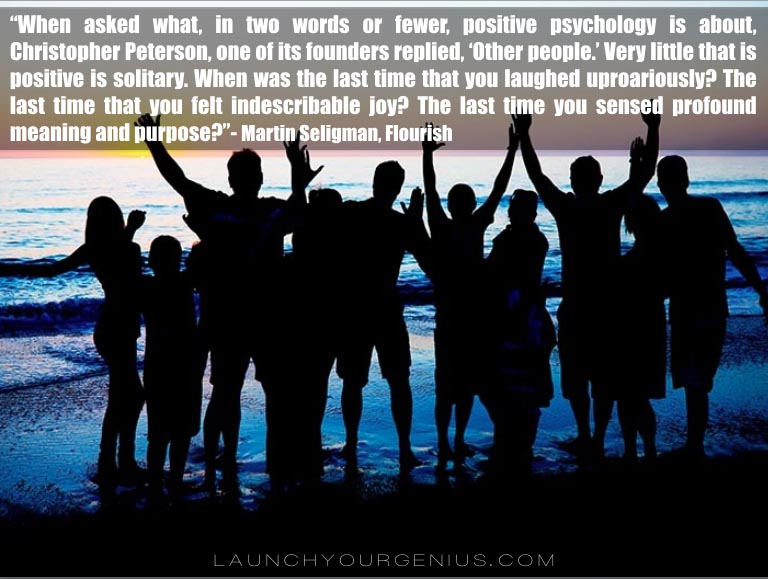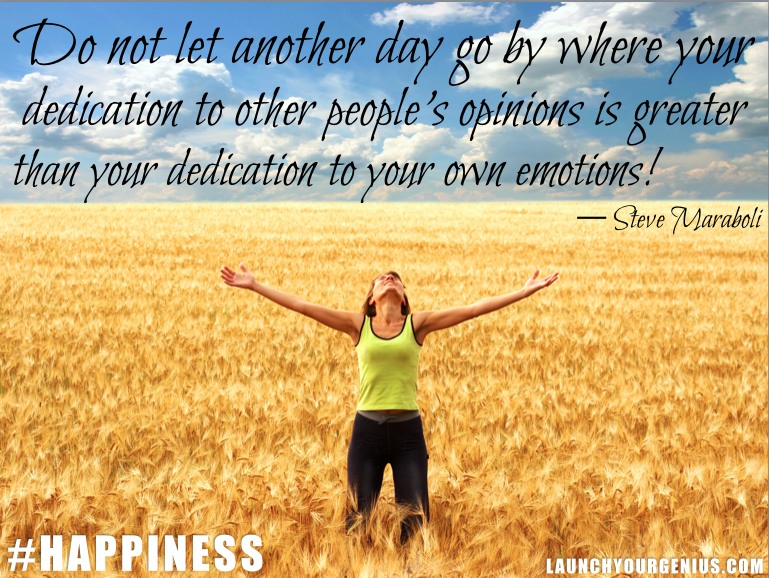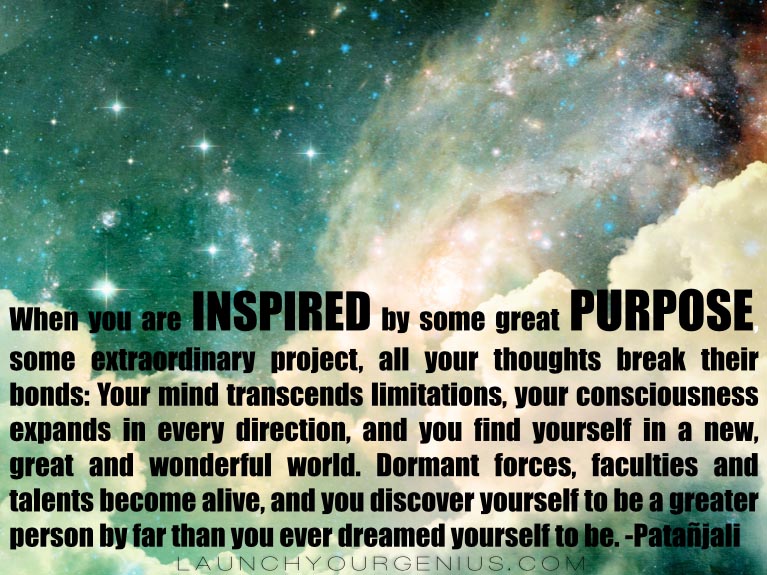“I’m trying to broaden the scope of positive psychology well beyond the smiley face. Happiness is just one-fifth of what human beings choose to do.”- Martin Seligman
Do you find it exhausting sometimes to appear and act cheerful and happy even though you do not feel like that?
Do people expect you to be “happy” all the time and act surprised when you do not smile?
Have you been judged to be happy or unhappy based on the mood that you had at the current moment?
Why does society have the dominant opinion that people who smile and are cheerful in the moment are happier than those who are not?
Are you an introvert and have been considered less happy than your smiling and extroverted friends and family?
I think it is exhausting to try to be happy and cheerful all the time and the definition of happiness needs to be redefined to include a more all-encompassing view of people.
In 2011, the renowned psychologist and one of the founders of the field of positive psychology, Martin Seligman published his book, Flourish.
The book reflects the shift in direction that Seligman has taken from his early authentic happiness theory to his more inclusive well-being theory.
Seligman describes this shift as a change of focus in his interpretation of positive psychology from happiness and life satisfaction to well-being and flourishing.
Seligman says that there are inadequacies in his previous authentic happiness theory.
The first one he points to is that happiness is interpreted as being in a happy and cheerful mood.
Happiness can mean a lot more than just life satisfaction and when asked people how satisfied they were, their reply was often based on how good they felt at that moment.
Seligman says that your mood determines how satisfied you feel with your life at least 70 percent of the time.
Seligman gives the example of the mood-based view of happiness as being erroneous since it places 50% of the world’s population into the realms of unhappiness.
These 50% are called “low-positive effectives” and in fact even if they are not outwardly cheerful, they may have higher levels of engagement and meaning in their life when compared to the outwardly happy people.
Another example that Seligman supplies is that of introverts.
He says that from the opinion of the mood based theory of happiness, extroverts who display cheerfulness will be considered to be happier.
I have always wondered about the same question and I believe that Seligman’s assessment is very liberating because he includes the power of meaning and engagement into the theory of happiness and democratizes the meaning of what happiness should look like.
“Life satisfaction essentially measures cheerful mood, so it is not entitled to a central place in any theory that aims to be more than a happiology.”- Martin Seligman
Seligman developed the “well being theory” and his PERMA model as his new direction in positive psychology and his description of the good life.
PERMA stands for:
P is Positive Emotion
E is Engagement
R is Relationships
M for Meaning
A for Achievement
The goal of the well-being theory according to Seligman is to increase flourishing by the increasing the five elements of PERMA.
Seligman also points out that each of the elements of PERMA needs to contribute to well-being, needs to be pursued for its own sake and should be able to be exclusively measured independently of the other elements.
“You can have meaning, accomplishment, engagement and good relationships, even if you are dull on the positive affect side.”- Martin Seligman
1. P For Positive Emotion
“Do not let another day go by where your dedication to other people’s opinions is greater than your dedication to your own emotions!” ― Steve Maraboli, Life, the Truth, and Being Free
One of the cornerstones of Seligman’s well-being theory is positive emotion.
Positive emotion was given a big role in Seligman’s authentic happiness theory too but with a key distinction.
In the well-being theory, happiness and life satisfaction are part of positive emotion and not the goals of the theory itself.
I believe this change by Seligman unhooks the dependence of the entire genre of positive psychology from the clutches of cheerfulness and striving always to get life satisfaction.
More importantly, it allows the inclusion of other crucial elements into the idea of flourishing and well-being such as relationships, engagement and meaning.
I have to agree that positive emotion plays an important role in setting the tone for the day and maintaining enthusiasm and engagement.
What are some of the positive emotion enhancers?
A sense of Peace…
Allowing deep and heartfelt gratitude…
Living from appreciation of what you have…
A deep sense of hope and anticipation for a good turn of events…
Ability to receive and give love…
I have previously written about how research has shown that negativity is stronger than positivity and how to offset one negative thought, feeling or interaction, we have to offset it with 3 to 5 positive ones.
I think that if we can tip the balance of emotion towards positivity by seeking and enhancing experiences that provide that, we are on the path of well-being.
Negative emotions may be impossible to ignore and in fact it would be counter productive to attempt running away from them.
However, where you have power is in the choice of whether you want to dwell in them or not.
We can attempt to live with more positive emotion by becoming aware of the role of negative emotions in our lives.
2. E For Engagement
“Engagement remains an element. Like positive emotion it is assesses only subjectively. ‘Did time stop for you? Were you completely absorbed by the task? Did you lose self-consciousness?”- Martin Seligman, Flourish
Deep engagement is a sense and experience of flow.
When you are deeply engaged and focused on a difficult task and strive to push the boundaries of your actively developing skill, you may enter into a state described by the famous psychologist Mihaly Csikszentmihalyi as flow.
We have all experienced this wonderful state or rather statelessness where you are so highly focused at the task at hand that it seems that time does not matter and things just happen without much conscious effort and deliberate activity.
In an interview to wired magazine, Csikszentmihalyi says that flow is:
“being completely involved in an activity for its own sake. The ego falls away. Time flies. Every action, movement and thought follows inevitably from the previous one, like playing jazz. Your whole being is involved, and you’re using your skills to the utmost”
The most interesting aspect of flow is that it is intrinsically rewarding.
Flow is intrinsically motivating and an increase of flow experiences simply make you feel great and enhance well-being.
How can you increase engagement and flow in your life?
Ask “why” and seek skills and tasks that you love to pursue.
Practice focus and concentration on the task at hand.
Practice at the edge of your skill and difficulty level.
Reduce distractions and attention disruptors.
Make habitual focused concentration and engagement a priority and not an afterthought.
3. R or Positive Relationships
“When asked what, in two words or fewer, positive psychology is about, Christopher Peterson, one of its founders replied, ‘Other people.’ Very little that is positive is solitary. When was the last time that you laughed uproariously? The last time that you felt indescribable joy? The last time you sensed profound meaning and purpose?”- Martin Seligman, Flourish
Seligman rightly says that most of our greatest positive experiences and high points have happened in the company of other people.
Research in psychology has time and again demonstrated the efficacy of strong and meaningful relationships in the role of well-being and happiness in our lives.
One of the largest longitudinal psychology studies ever conducted on what makes people happy, The Harvard Men Study came to the startling conclusion that relationships mattered a lot for well-being and thriving.
“The only thing that really matters in life are your relationships to other people,” and “Happiness equals love—full stop.”-George E. Vaillant as shared to the Atlantic
Often we get caught up in work, stress and our idea of doing it all alone and neglect our primary relationships. Ironically, it is these relationships with others that need prioritizing on a regular basis for a greater success in our life.
What are some of the ways to strengthen positive relationships with others?
Assess how your relationships are with other people.
Do you have strong and meaningful personal and work relationships?
Are you devoting time to build, maintain and promote those relationships or are you prioritizing other things in your life?
Are you criticizing, blaming and complaining in some of your major relationships and adding stress and negativity to the interactions?
Are your relationships “I am ok, you are ok” or are they tipping towards other scenarios such as “I am not ok, you are ok” or “I am ok, you are not ok.”
Are you allowing judgment, anger and perfectionism to run and ruin some of your otherwise strong relationships?
How are your major interactions in your relationships? Do you have a good abundance of positive interactions or do they tip towards the negativity scale and making you feel bad?
Do you allow others to play mind games, do narcissistic maneuvers or just treat you with little or no respect?
Do you make an attempt to establish relationships where there is a good balance of give and take?
4. M for Meaning
“Spirituality is recognizing and celebrating that we are all inextricably connected to each other by a power greater than all of us, and that our connection to that power and to one another is grounded in love and compassion. Practicing spirituality brings a sense of perspective, meaning and purpose to our lives.” ― Brené Brown, The Gifts of Imperfection
Meaning is associating with, belonging to and the striving to serve a cause that you consider bigger than the self.
If our personal life and our work make us feel and believe that we are connected to a higher purpose and a goal and that we are incrementally moving forward in that quest, we experience more well-being.
Having a sense of higher purpose has been described from the ancient times when Patañjali the sage who brought The Yoga Sutras to the world declared in no uncertain terms of the power of purpose:
“When you are inspired by some great purpose, some extraordinary project, all your thoughts break their bonds: Your mind transcends limitations, your consciousness expands in every direction, and you find yourself in a new, great and wonderful world. Dormant forces, faculties and talents become alive, and you discover yourself to be a greater person by far than you ever dreamed yourself to be.”
What are some of the ways to increase meaning?
Practice acts of kindness and upliftment…
Find the intersection of intention or why you want to do something, the skills that you get drawn to, passions that you hold, enthusiasm that you experience and livelihood that you can make for a life of higher purpose.
Connect your life and work to the value and service that you can provide to others.
Practice spirituality that is meaningful to your culture and context.
Define very clearly what increases your life meaning and purpose and pursue those activities.
Become a mentor, volunteer and assist people who are seeking direction.
Begin by making a small and meaningful impact on your surroundings.
5. A for Accomplishment or Achievement
“Achievers are those who have redefined impossible, changing ‘what can’t be done’ into ‘a work in progress.’ ” ― Richelle E. Goodrich
Accomplishment has been included as an element for well-being because when it is pursued for its own sake, it can uplift and fuel the well-being of the self and other people.
Seligman gives the example of tycoons who pursued wealth in their early careers to give most of it away in astonishing acts of philanthropy later on in their lives.
He gives the examples of John D. Rockefeller, Andrew Carnegie, Charles Feeney, Bill Gates and Warren Buffett who achieved greatly and then created enhanced meaning and purpose in the second halves of their lives by giving it all away.
Seligman recognizes that there will always be some who will be self-absorbed in their pursuits of achievement.
According to him, the inclusion of achievement takes the well-being theory towards a more complete picture of what people choose for its own sake.
I am inclined to agree with Seligman that achievement for achievement’s sake and for assisting others reach their own PERMA goals is an important aspect of thriving.
If not taken too far and into self-absorption, achievement and accomplishment provide the motivation, rewards and fuel needed to propel forward in life.
How can you increase a sense of achievement in your life?
A healthy striving and accomplishment is a wonderful way to increase the sense of well-being in life.
In contrast, feeling stuck or feeling like you have little options for achievement is deeply demotivation and depressing.
What are you striving to achieve and accomplish?
Do you have immediate and future goals that you are working towards?
Do you reward yourself during and after achieving something and do you feel great after accomplishing something difficult.
Are you allowing yourself the feelings and experiences of well-being that come with achievement?
In conclusion, we can go past the cheerfulness theory of life and include Seligman’s elements of PERMA to increase a feeling of well-being and feel and experience a deep sense of thriving and flourishing.
Now over to you my AWESOME readers! The floor is yours now!
Let me know in the comments below if you have struggled in the past with trying to be happy all the time and if this post resonated with you!
And above all, STAY INSPIRED and may PARMA be with you!







Comments